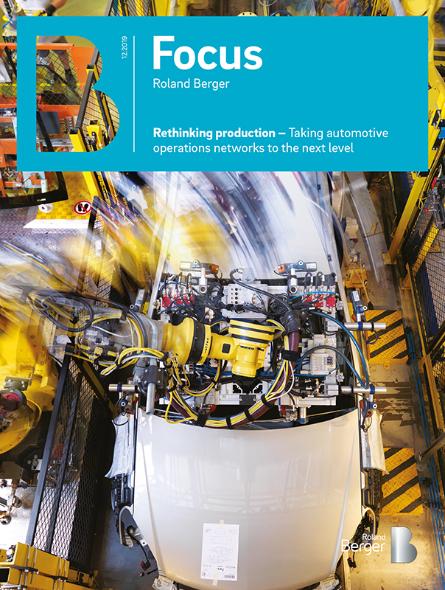Taking automotive operations networks to the next level
![{[downloads[language].preview]}](https://www.rolandberger.com/publications/publication_image/RB_STU_602_Future_of_automotive_operations_efficiency_Cover_download_preview.jpg)
Facing the challenges amongst the disruption in the automotive industry.


The automotive industry is undergoing a major disruption. We believe that this transformation is driven by four major trends: New mobility trends and behaviors are developing around the world, autonomous technologies have firmly arrived on the scene, digital features are impacting firms and consumers, and powertrain electrification is causing automakers to rethink their legacy business while preparing for new growth areas. These changes have profound implications for the operational setup of plant organization and investment decisions that automotive OEMs will need to make, which ultimately brings multiple challenges with it. In our study "Rethinking production – Taking automotive operations networks to the next level" we set out to identify the key characteristics of increased operational efficiency in automotive production.

1. Reduce manufacturing complexity: review current product portfolio, weed out underperforming products, and make extended product archetypes your guiding principle. When defining their new archetypes, OEMs should consider reducing vertical integration, which will immediately simplify production.
2. Improve scalability of plants: define plant archetypes and categorize them according to criteria such as region, platform orientation, capacity, productivity, complexity, and other KPIs. Scalable archetypes are better than mega-factories that often cannot cope with today’s dynamic environment and changing requirements.
3. Increase efficiency and flexibility of plants: focus plants on vehicle manufacturing. By centering plants on their production assignment and moving functions not related to production to the head office or cross-plant service departments, firms create supportive synergies and reduce costs and complexity. Plants become leaner, more efficient, and ultimately more flexible.
4. More supportive planning and steering: boost operational efficiency by applying lean principles to the planning, control, and other support functions, in plants as well as the head office. The key is to create a lean, standardized structure across the entire plant organization: all plant-based and head-office functions need to be geared towards manufacturing processes and principles.
5. Improve production network flexibility: automotive OEMs need to rethink traditional guiding principles for network structures. Instead, they should systematize plant organization as a single, flexible network based on realistic volume scenarios. The first task is to examine existing guidelines on areas such as “local-to-local”, platform orientation and sourcing footprints.
Rethinking production is a critical task for today's automotive OEMs: Without a major boost in operational efficiency they risk falling victim to the increasing uncertainty that plagues the industry. We believe that manufacturers must take action now. It's time to take automotive operations networks to the next level.

![{[downloads[language].preview]}](https://www.rolandberger.com/publications/publication_image/RB_STU_602_Future_of_automotive_operations_efficiency_Cover_download_preview.jpg)
Facing the challenges amongst the disruption in the automotive industry.